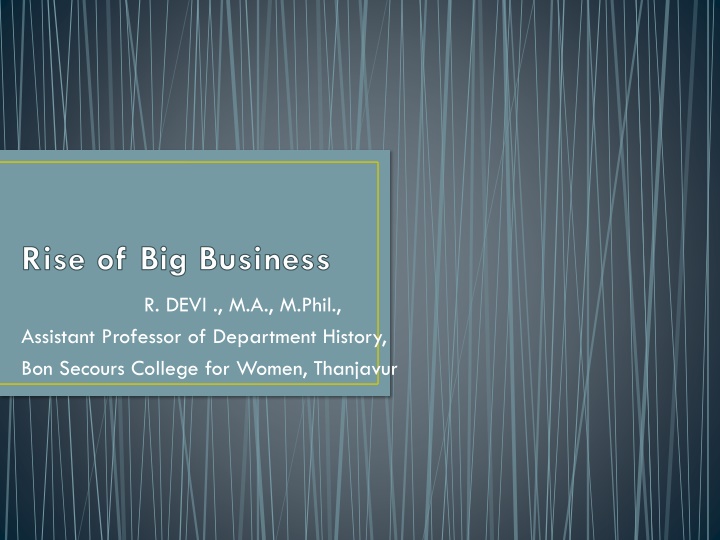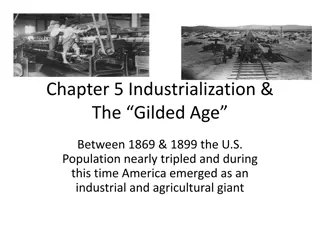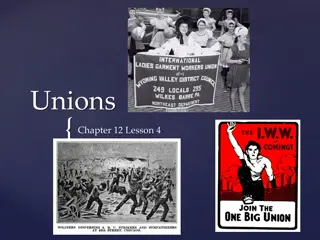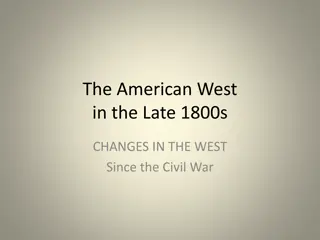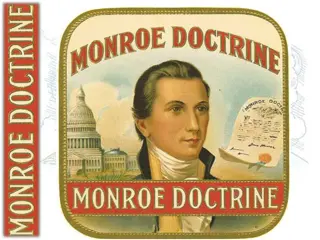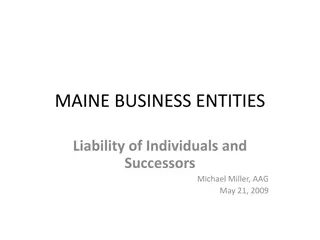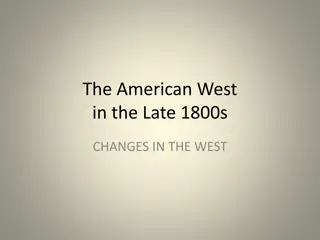The Rise of Big Business: Impact of Corporations in the Late 1800s
Explore the emergence of Big Business and corporations during the late 1800s in the United States. Discover how industrial growth, advancements in technology, and key industries such as oil, steel, and railroads shaped the economy. Uncover the roles of influential figures like the Robber Barons and Captains of Industry in driving innovation and wealth accumulation. Witness the transition from charters to corporation laws that revolutionized business practices and governance.
Download Presentation

Please find below an Image/Link to download the presentation.
The content on the website is provided AS IS for your information and personal use only. It may not be sold, licensed, or shared on other websites without obtaining consent from the author.If you encounter any issues during the download, it is possible that the publisher has removed the file from their server.
You are allowed to download the files provided on this website for personal or commercial use, subject to the condition that they are used lawfully. All files are the property of their respective owners.
The content on the website is provided AS IS for your information and personal use only. It may not be sold, licensed, or shared on other websites without obtaining consent from the author.
E N D
Presentation Transcript
Rise of Big Business R. DEVI ., M.A., M.Phil., Assistant Professor of Department History, Bon Secours College for Women, Thanjavur
Introduction The term 'Big Business' originated in the late 1800's commercial as a derogatory term for large corporations and unfair business practices. The term was applied to large corporations that by mergers and acquisitions had consolidated (combined) and eliminated many companies that previously existed. The rise of Big Business and corporations were financed and organized on a such massive scale that they were able to influence social and political policies in the United States. Opponents of Big Business and large corporations in the late 1800's argued that they had too much power in government and used their influence to extract favorable legislation.
The Industrial Revolution The Rise of Big Business and the establishment of corporations emerged during the period of intense economic and industrial growth during the US Industrial revolution New inventions, innovations and technology provided the entrepreneurs of the era with the opportunity to create the massive organizations so bringing about the rise of Big Business and Corporations
The U.S. Economy The economy in the late 1800's was dominated by the Big business and corporations that operated in the oil and petrol business, the steel industry, the railroads, textiles and food production that operated warehouses, offices, and distribution facilities and employed the majority of the labor force in the United States. vast complexes of factories,
The Robber Barons and Captains of Industry The Rise of Big Business and corporations was driven by men of vision who took risks developing new inventions whose determination earned them vast amounts of money, fame and success. These men who built the new industries all made a significant contribution to the economy of the United States by expanding markets and increasing trade. These entrepreneurs also used new methods, inventions and technology to increase productivity and create new jobs. The Rise of Big Business and corporations saw varying business practices and ethics which led to wealthy industrialists being referred to either as robber barons Robber Baronsor as captains of industry Captains
Charters replaced by Corporation Laws The Rise of Big Business and corporations in the United States really began in the mid 1800's. Before this time business entrepreneurs had to persuade a state legislature to issue them with a charter. Charters (licenses to exist) were granted for a limited time and could be revoked. This changed in the 1830s when states began passing broad incorporation laws that allowed companies to become corporations and issue stock without charters from the state legislature.
Economies of Scale The Rise of Big Business was made possible by establishing corporations that used economies of scale. What are economies of scale? Economies of Scale were made possible by using the money raised from the sale of stock Big Business and corporations could use this money to invest in the business to increase their efficiency and profitability Big Business and corporations were therefore able to invest in new inventions and technology. They had the money to buy many new machines and raw materials at highly competitive prices They had the money to employ a vast labor force to increase productivity They were also able to negotiate rebates from the railroads, reducing their operating and shipping costs even further These practices allowed Big Business and corporations to achieve what are called Economies of Scale
The Role of Corporations A corporation is an organization formed with state governmental approval that is owned by many people but treated by law as though it were a single person that has its own powers, duties, and liabilities A corporation conducts business, pays taxes and makes contracts, and can sue and be sued A corporation can issue shares of stock to raise large amounts of money with which to start a business or increase its capital Shares of ownership called stock The people who own corporations are called stockholders Issuing stock allows a corporation to spread the financial risk
Small Businesses were eliminated The Rise of Big Business saw the corporations dominating all of the important, major industries. They were able to make goods more cheaply and quickly and cut prices by using using large manufacturing facilities. They began to make enormous profits, which attracted even more investors who bought shares of stock that provided Big Business and corporations to make even more investments. Existing businesses just could not compete and were forced out of business - meaning more customers, limited competition and the opportunity to increase profits even further.
Consolidation of Industry Big Business and corporations became powerful and started to fix prices. The organized 'Pools' by which they maintained prices within an industry at an agreed level. However, agreements were broken and one 'Pool' member cut prices to steal customers from the competition within the Pool. The Pool system therefore did not last long but it had resulted in reducing some large industries being run by just a few extremely wealthy Big Businesses and corporations
The Monopolies The Rise of Big Business and corporations continued with the emergence of monopolies. Monopolies were achieved when a single corporation bought out all of the competition and achieved control over an entire market. A monopoly could basically set whatever prices they wanted. The could increase prices at will and exert power over their labor force by cutting wages or increasing hours.
The Trusts The rise of monopolies held by Big Business and corporations were addressed by passing new laws to make it illegal for one company to own stock in other companies without specific permission from the State Legislature. Big Business and corporations then formed 'Trusts' which enabled them to merge businesses without violating the laws against owning other companies which enabled them to continue the practice of regulating the supply and price of commodities. The establishment of the Trusts were another way to monopolize an industry or big business.
Laws to curb Monopolies New laws were passed in response to public demand that the monopolies be regulated. The 1887 Interstate commerce act was passed by Congress to curb the activities of the railroads. The 1890 Sherman antitrust act 1890 was passed by Congress to protect trade and commerce from unfair business practices that limited competition, or controlled prices. The Sherman Antitrust Act ostensibly clamped down on monopolies, but in reality turned out to be pretty ineffective until the 1904 Northern securities case.
